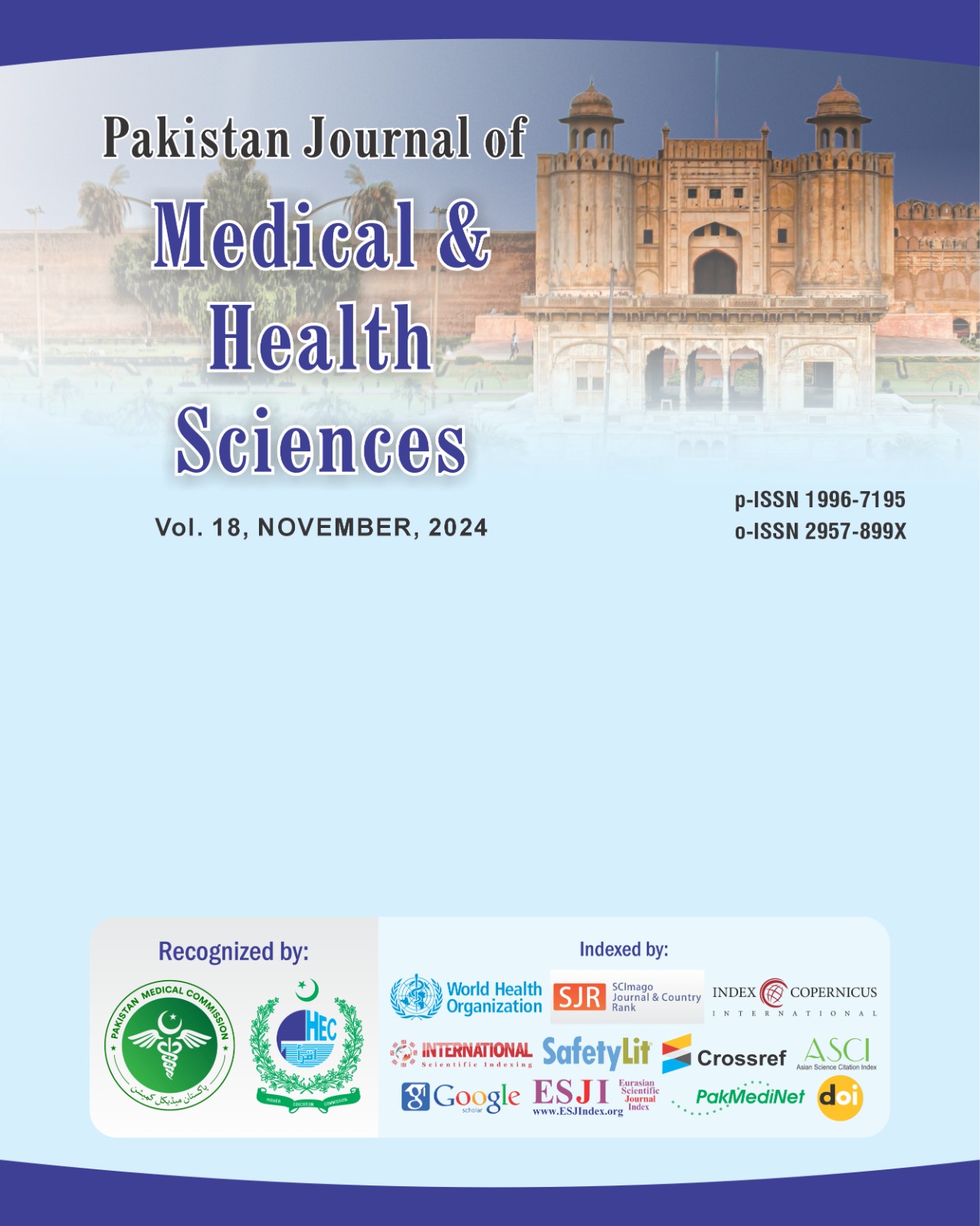Ultra-distal Tibial Fractures: A retrospective comparison of distal plate versus nail fixation
DOI:
https://doi.org/10.53350/pjmhs020241811.6Abstract
Background: Ultra-distal tibial fractures, involving the metaphyseal and epiphyseal regions of the distal tibia, are challenging to manage due to limited bone stock, complex anatomy and soft tissue vulnerability.
Aim: To compare the clinical and radiological outcomes of distal tibial plate fixation versus intramedullary nail fixation in the treatment of ultra-distal tibial fractures.
Methods: A retrospective study was conducted in the Department of Orthopedic THQ Hospital Samarbagh Dir lower KPK during may 2022 to June 2023. Patients were divided into two groups: Group A (n=18) underwent distal tibial plating and Group B (n=17) received intramedullary nailing. Data were collected on union time, malalignment, functional outcomes (AOFAS score), operative time, hospital stay, and complications.
Results: The mean time to union was 16.2±2.4 weeks in the plating group and 15.1±2.1 weeks in the nailing group (p=0.12). Malalignment occurred in 5.6% of the plating group and 17.6% of the nailing group (p = 0.24). Mean AOFAS scores at 12 months were 87.3 ± 6.8 (plating) and 84.7±7.5 (nailing) (p=0.21). Operative time and hospital stay were significantly shorter in the nailing group (p< 0.05). Superficial wound complications were more frequent in the plating group, whereas hardware irritation was more common with nailing.
Conclusion: It is concluded that both distal plating and intramedullary nailing are viable options for managing ultra-distal tibial fractures. Plating offers better alignment control, while nailing provides benefits in terms of surgical efficiency and early rehabilitation.
Keywords: Intramedulllary nail, tibial fracture, Ultra-distal tibial fractures



